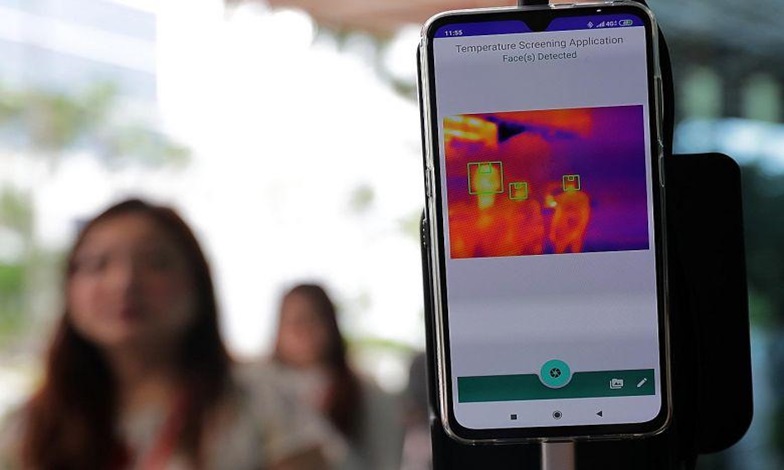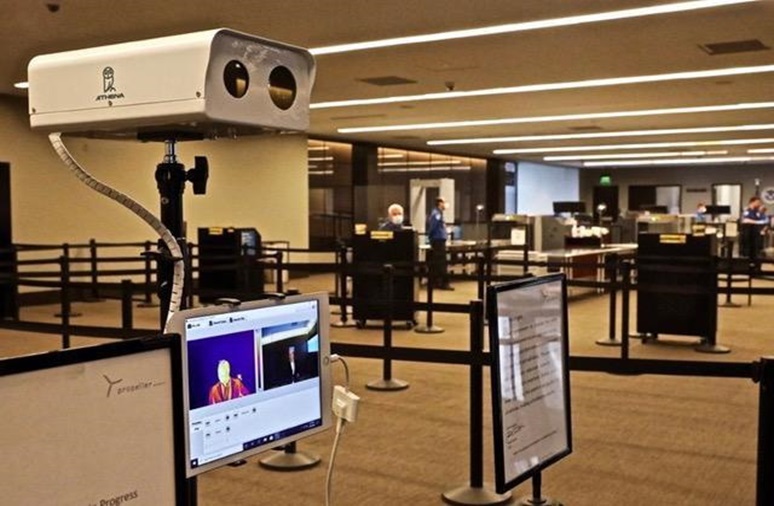As businesses and government leaders start to discuss returning to normal and looking to thermographic cams to help people, doubts, and questions still remain about whether and how the latest tech can help. Across every industry, people are looking for the perfect tools and devices to help them detect, slow, and stop viruses.
Beyond that, even returning the operation in any way will need to demonstrate measures to protect the well-being and health of people in different situations, including work and travel. One way is to use thermal or thermographic scanners. Not like most medical imaging solutions, Infrared thermal devices do not require expensive or irradiation tools and equipment, and present no health risks.
IR radiation emitted from our body can be detected, and with details about the ambient environment, use to check core skin temp and identify who has a fever or who have a high temperature that is above normal. If people have high body temperature, they might have an illness.
If they have a fever, it might mean that they are infected. And if they are infected that causes a fever, it might be Corona Virus Disease-19 or CoViD-19, since it is one of the early signs and symptoms of this disease if it seems a little bit indirect, well, because it is.
Check out this site to know more about COVID-19
Thermographic cams cannot detect viruses or certain infections. Manufacturers of these devices, as well as medical experts and professionals, have had people remind that thermographic imaging devices cannot be used in this manner. But many thermographic camera systems can detect at least some symptoms of diseases or narrow down a group of people into smaller ones.

These systems can come in various forms that include modern and sophisticated scanners or basic portable thermometers. These devices usually are the most common systems for volume and accuracy when it comes to Corona Virus Disease-19 detection. They are cameras that are attached to computers or laptops that were pointed towards places with the usual high volume of traffic or where people usually walk.
Today, it represents the only feasible non-contact public screening approach for this pandemic. In an open environment like the mall or airports, there are little to no options. People need real-time body temperature estimates that can help them identify individuals with infections who require immediate medical attention or even quarantine.
However, the accuracy of these IR systems can be affected by equipment, environmental, or human variables. Knowing and understanding these variables will help both the system manufacturers and the users deliver the best possible result. That takes a lot of considerations of how technology, applications, and science interact.
Visit https://hearingwellclub.com/what-are-infrared-systems to know more about IR systems.
Think about the people using the technology
Temperature detection has been used by medical professionals and other industries to detect fever for over a decade. And while camera devices can be more modern and sophisticated, these systems are not the only option. Especially in Asia, cost-effective, efficient, and fast Infrared thermometers have been used in places with heavy traffic of people like malls, airports, or stadiums for screening.
Documents from the CDC or Centers for Disease Control and Prevention show that one reason thermometers are more accurate compared to camera-based temperature sensors because thermometers can be used effectively with ease. Still, a regular thermometer has its disadvantages or weaknesses.
It requires users to violate the six feet or two-meter social distancing protocol. It will increase people’s chances of getting the disease. By only measuring body temperature in one spot, they also cannot account as easily for different variations across surfaces. It cannot get the bigger picture of body temperature in contact (for instance, comparing body temp to the environmental temp).

In 2005, experts looking for ways to detect the swine flu virus had numerous problems measuring body temperatures in the humid and hot environment. They found out that compared to the traditional thermometer, and old thermographic cams that were used to detect Severe Acute Respiratory Syndrome or SARS, newer models offered excellent performance improvements.
Some of these devices had to do with the intelligence of these devices. It has features like real-time calibration to temperature with good accuracy. Other features of modern camera systems that led to good results were user-friendly devices like automated target recognition cams, pairing thermal cams with light cameras, improved reso-thermal devices, automatic alarms for febrile people, as well as clearly outlining when it comes to hot spots, all made this technology a lot easier to use.
To find out more about temp detection, click here for more info.
Know every baseline
Since the environment can influence temp measurements, some device manufacturers recommend recording population baselines in every site, every day. Users need to take at least ten known individuals with good health, scan them with cameras, and save the result.
Subjects that were examined are then compared to the population baseline. There are a lot of problems with this methodology. Because viruses have an incubation period, especially with the Corona Virus Disease-19, as well as the unreliability of screenings, it is not always possible to know if a person is healthy or not.

There are also differences between individuals – there still has no standard baseline that the public understands. Studies that have cast doubts on its accuracy recommend more research that compares results from subjects that have fevers. An improved way to approach this is to use reference temp sources.
To find out more about baseline sampling, http://www.coastalwiki.org/wiki/Sampling for more details.
It is a device that was designed to maintain itself at certain temp ranges when it comes to temperatures. It allows the thermographic cam system to calibrate without human intervention against temperature, it is programmed to look for, even ambient temperatures change. It needs to be placed in areas with a good field of view, allowing the software to calibrate the environment to a precise value.
Another crucial parameter is image uniformity. Usually, the corner places of target planes differ in lower-quality sensors, making them unusable and unreliable. A uniform image across the device’s field of vision means that the system has a lot of options to choose from – subjects do not have to be in the center of the image. Uniformity and lower minimum detectable temp difference and higher resolution allow subjects to be measured close to accuracy.


